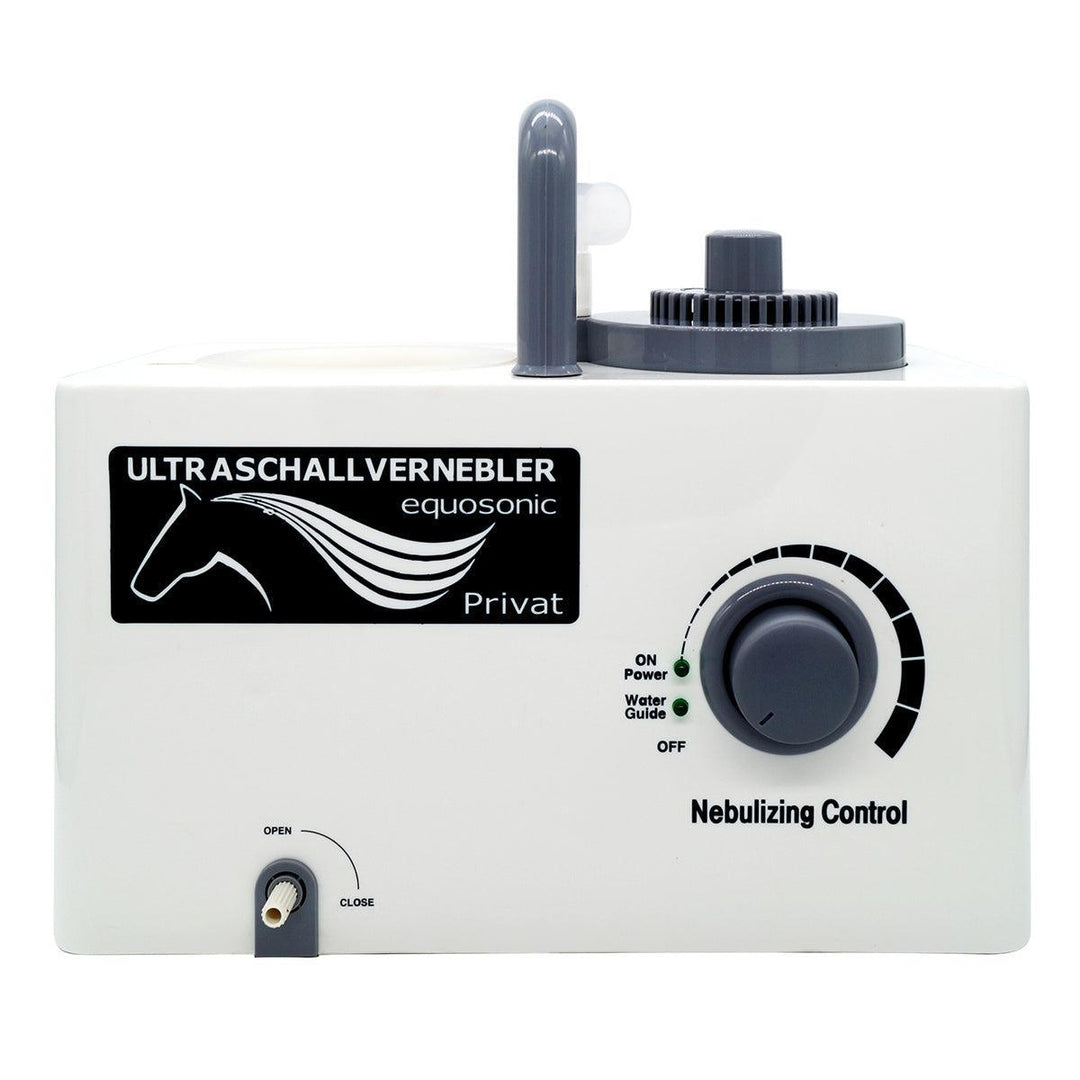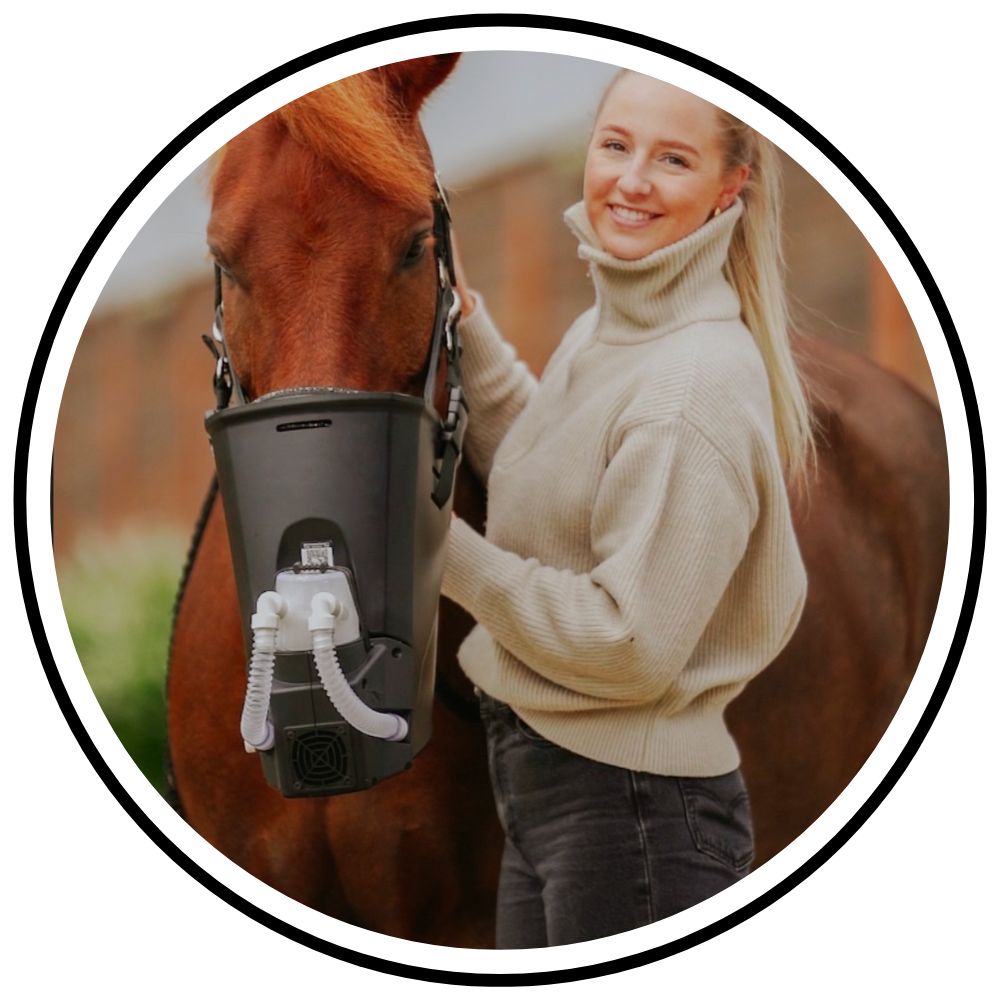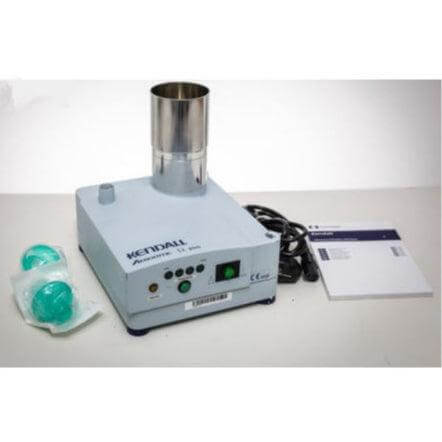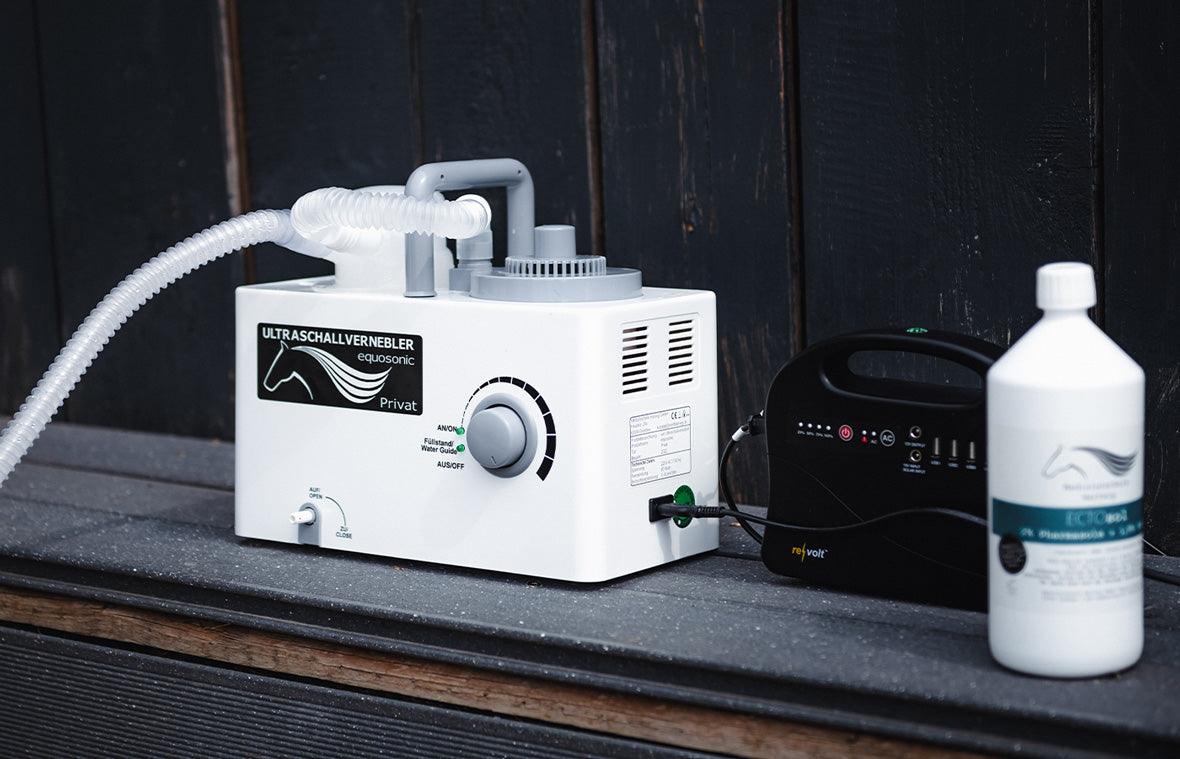
Equosonic Private without accessories
- Effective Respiratory Therapy
- Stress-free inhalation
- Mobile use

14 Tage
Geld zurück

Gratis Versand
ab 100€

Ultrasonic nebulizers are used for the treatment of all respiratory diseases of various origins. The generation of mist occurs through mechanical vibrations of 1.7 MHz (medical ultrasonic nebulizers), which are produced in distilled water (contact water). These vibrations are generated by piezoceramic components that convert electrical vibrations into mechanical ones. To provide physical separation between the medical nebulizer and the nebulization unit, an aquapak® system is used in the contact liquid. The mechanical vibrations penetrate its bottom and spread out in the inhalation liquid.
"They lead to the formation of capillary waves on the surface of the NaCl/medication solution, which rise exponentially with increasing excitation frequency."
Included in the package are:
- Equosonic Privat
Technical data:
- Particle size 0.5-5 microns (fully respirable)
- Nebulizer output approx. 4 ml/min
- Power approx. 80 watts
- Operating voltage 230Volts 50Hz
Attention: Accessories are required for use. Please ensure that you have everything necessary.
"Our ultrasonic nebulizers of the equosonic series achieve droplet sizes from 0.5 to 5 µm, with a performance of up to 6.5 ml/min. For normally sized horses, 4 ml/min is completely sufficient. They reach both the upper and lower respiratory tracts. This distinguishes ultrasonic nebulizers from the technically simpler compressor nebulizers, as the functional main part of the respiratory tract with its very large surface area (bronchial system, alveolar system of the lung) is fully reached."
"More than 95% of the surface of the respiratory system is located below the larynx. The bronchial system has bronchi in its finest branches with a diameter of a human hair, and a targeted application of nebulized substances must pass a threshold smaller than 5/1000 mm (5 microns) to reach the structures of the alveoli (air sacs)."
This implies that the main proportion of the nebulized particles must be smaller than 5 microns.
Our ultrasonic nebulizers of the equosonic series (private, clinic) operate with a vibration frequency of the ceramic membrane of 1.7 MHz. This generates durable particles in a size spectrum of 0.5 – 5 µm (micron).
Due to the high ventilation speeds in the fine bronchioles, effective inhalation must occur calmly, that is, with a low breathing frequency. The animal should not be moved beforehand, and immediate movement of the animal after treatment is also not advisable.
The open mask:
Our inhalation mask is a PE bucket shape made of high-quality, food-safe plastic, without additional valves. We firmly believe in not using closed masks where the animal has to suck in the mist. Our mist is delivered into the mask through a ventilation system. Have you ever had a lung function test? If so, you may know how uncomfortable it is to breathe against resistance. Just imagine that for 10-20 minutes! Our conviction is: When the horse breathes stress-free, it breathes correctly. With stress-free and calm breathing, the speed of the air is lower, and the aerosols can better reach the mucous membranes. The finest bronchioles of the lower respiratory tract represent the largest area to be nebulized. Our inhalers deliver the inhalant into the mask. The horse can calmly exhale the mist, and the treatment is more successful.
Inhale during movement?
We do not recommend that! When we move, our breathing becomes faster and shallower. This may result in the content not being sufficiently deposited in the finest bronchioles. We recommend inhalation while standing. Movement after inhalation with a time delay (15 min) is not a problem and can be beneficial. In principle, horses need to be exercised, but not in direct combination with inhalation.
"We provide a warranty of 12 months from the date of purchase for the device purchased from us. The ultrasonic unit is excluded from this, as it is considered a wear part and is not covered by warranty. Hard impacts, extreme temperatures, and
Mechanical damage to the surfaces leads to rapid aging or sudden failure.
Since the ultrasound unit is a consumable part, it must be replaced at irregular intervals depending on usage and maintenance. Usually, a change is necessary after 12-24 months.






